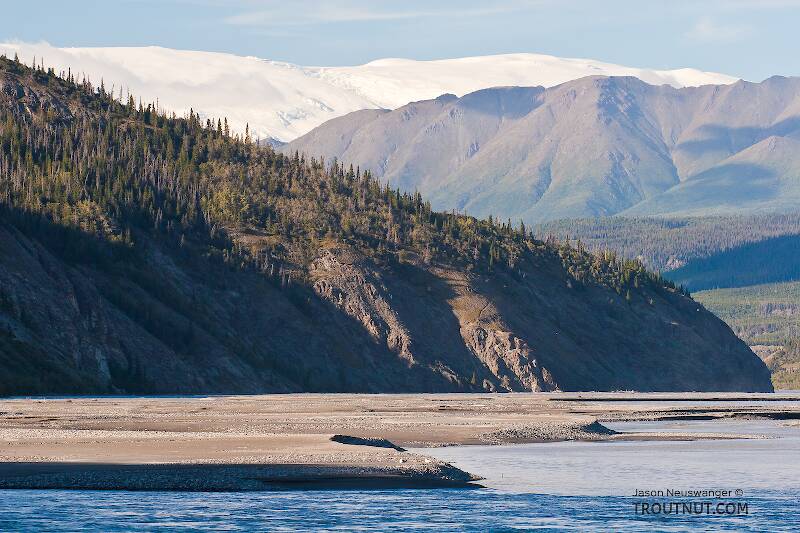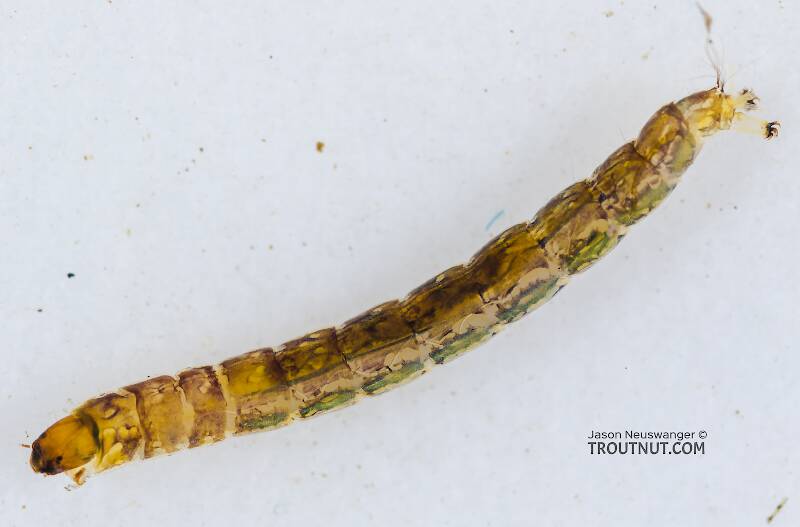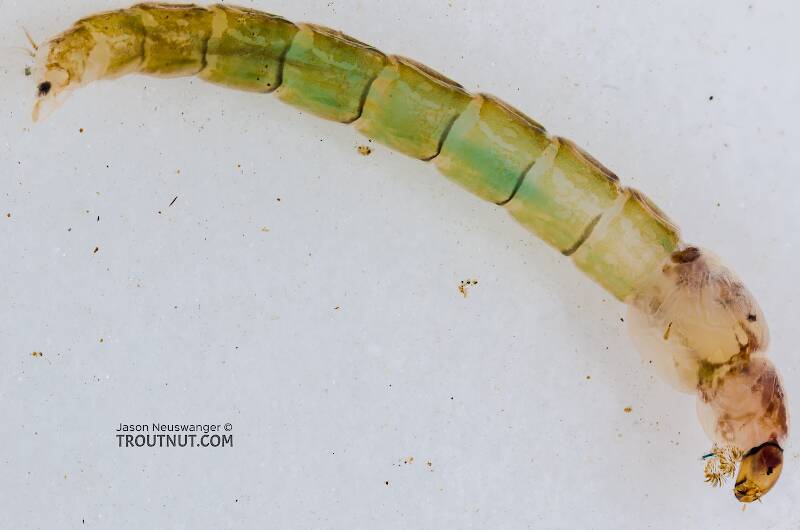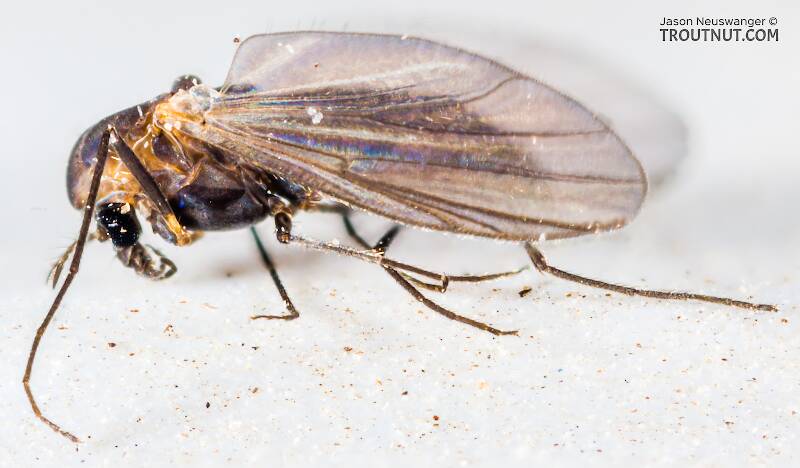
Hex Mayflies
Hexagenia limbata
The famous nocturnal Hex hatch of the Midwest (and a few other lucky locations) stirs to the surface mythically large brown trout that only touch streamers for the rest of the year.
Featured on the forum

This wild-looking little thing completely puzzled me. At first I was thinking beetle or month larva, until I got a look at the pictures on the computer screen. I made a couple of incorrect guesses before entomologist Greg Courtney pointed me in the right direction with Psychodidae. He suggested a possible genus of Thornburghiella, but could not rule out some other members of the tribe Pericomini.

Troutnut is a project started in 2003 by salmonid ecologist Jason "Troutnut" Neuswanger to help anglers and
fly tyers unabashedly embrace the entomological side of the sport. Learn more about Troutnut or
support the project for an enhanced experience here.
This topic is about the True Fly Family Chironomidae
Midges are the most important aquatic insects in some places, especially fertile spring creeks where they are extremely abundant and the current is so slow that it's efficient for trout to surface feed on very tiny insects.Some midges are large, up to hook size 14, but the majority are size 22 or smaller. The number of genera and species is hopelessly huge for angler entomologists to ever learn, and the identifing characteristics often require slide-mounting tiny parts under high-powered microscopes. Even the most Latin-minded fisherman must slip back to the basics--size and color--to describe his local midge hatches.
Example specimens
Goose
Posts: 77
Posts: 77
Goose on Oct 24, 2006October 24th, 2006, 3:01 am EDT
Guys, what books besides Koch & Holbrook Midges books would you recommend for more on how and where midges live? I was reading an exerpt on midges from the book, Spring Creeks by Mike Lawson, and it seemed good. Koch & Holbrooks book is very good, but it seems to lack the how to fish pupa and when; where to find them, etc. I guess I'm looking for these kind of things plus habitat etc.
Softhackle on Oct 24, 2006October 24th, 2006, 7:58 am EDT
Hi Goose,
Look for a very nice book called "Tying Small Flies", by Ed Engle (Stackpole Books). I've borrowed a copy from my local Library and found it very good and thorough.
Mark
Look for a very nice book called "Tying Small Flies", by Ed Engle (Stackpole Books). I've borrowed a copy from my local Library and found it very good and thorough.
Mark
"I have the highest respect for the skilled wet-fly fisherman, as he has mastered an art of very great difficulty." Edward R. Hewitt
Flymphs, Soft-hackles and Spiders: http://www.troutnut.com/libstudio/FS&S/index.html
Flymphs, Soft-hackles and Spiders: http://www.troutnut.com/libstudio/FS&S/index.html
Sundula on Oct 25, 2006October 25th, 2006, 3:18 pm EDT
"Tying Small Flies", by Ed Engle is a good book but it is more of a "tying bench" book. It does offer some presentation advice, but it is geared more tword tying the patterns, as the name suggests. The reading I would suggest based upon your question would be the compainion book "Fishing Small Flies", by Ed Engle (Stockpole Books). Pages 136- 142 are specific to the "midge". I feel the whole book is a must read, along with "Tying Small Flies". Just because it is small does not automaticly make it a midge, remember "micro caddis" and mayflies. Another book worth a look is "A Fly Fisher's Guide to the South Platte River", by Pat Dorsey (Pruett Books). This book is specific to the South Platte drainage but I feel there are portions that would offer some valuble advice to you. Pages 118 - 122 are specific to midges, but through out there is good advice on technique. If nothing else it is a beautiful book and well worth the read. I could only imagagine that if I did not already live in Colorado and fish the South Platte 100 days a year it would make me want to.
I assume you posed this question because they will be the only major hatches here shortly, no matter where your home water is I am sure you will find value in the two I suggested and the suggestion made by "Softhackle". Remember to stay paitent this time of year, it will pay off.
-Tight Lines to you both
I assume you posed this question because they will be the only major hatches here shortly, no matter where your home water is I am sure you will find value in the two I suggested and the suggestion made by "Softhackle". Remember to stay paitent this time of year, it will pay off.
-Tight Lines to you both
Quick Reply
Related Discussions
Topic
Replies
Last Reply
1
Oct 24, 2008
by Brookyman
by Brookyman
0
Mar 17, 2011
by Troutnut
by Troutnut






